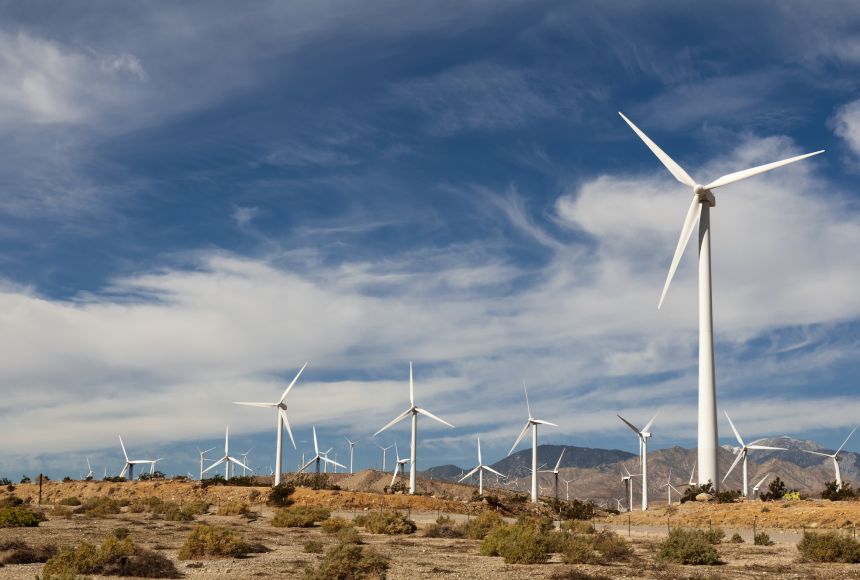At the end of the summer of 2005, a massive hurricane—Hurricane Katrina—made landfall and wreaked havoc across the Gulf Coast of the United States, from Florida to Texas. With estimated damages in excess of $100 billion, it was one of the costliest hurricanes on record in the Atlantic. Hurricanes, with their unique spiral shape and strong winds, are just one example of the incredible effects of atmospheric circulation and the Coriolis effect.
Atmospheric circulation—large-scale wind flow—is primarily driven by the sun. The atmosphere, made mainly of nitrogen and oxygen, not only helps to sustain life, but also keeps the planet insulated from the cold void of space. As sunlight warms a portion of Earth’s atmosphere, the air heats up, expands, and rises. Colder, denser air from above then sinks, filling the gap left by the hot air. The equator receives the lion’s share of sunlight and, as a result, air rises and moves out from the equator toward the poles. Then cooler air from midlatitudes moves into the equatorial region to be warmed, creating a cell of air circulation known as the Hadley cell. This process repeats at higher latitudes, which creates the Ferrel and Polar cells.
The areas where the cells meet have unique wind systems. For instance, at 30 degrees north and south of the equator—where the Ferrel and Hadley cells meet—there is a high-pressure zone, which creates an area where the winds are often weak. This area is known as the horse latitudes. It gets this name from sailors traveling to the New World who, when stuck at this latitude due to the lack of winds, reportedly threw horses overboard once they could no longer provide food or water for them.
The global air circulation creates climate regions as well as unique local winds. At the horse latitudes, the high pressure creates sunny skies and little precipitation. As a result, these regions are often home to deserts. Examples of these mid-latitude deserts include the Sonora Desert in the western United States and the Gobi Desert in northwestern China.
From the horse latitudes, the winds split, traveling north and south as a part of the Hadley and Ferrel cells. The trade winds blow toward the equator to replace the warm air rising there. As they reach the equator from the north and south sides, they create the doldrums—a humid area with light winds.
Just as the high pressures at the midlatitudes create dry conditions, low pressures also influence climate. The tropics are a result of the low-pressure region where the two Hadley cells meet. The trade winds blowing toward the equator carry moisture with them, and since hot air is capable of holding more moisture than cold air, the tropics experience heavy rainfall.
There are also circulation processes driving winds east to west. One important cell in the Pacific is called the Walker cell. This cell, which propels westerly trade winds, forms as high pressure off the coast of South America pushes air out over the Pacific. As it reaches warm Indonesia, the air rises and circles back to the east, completing the cycle. When the warm air rises and cools, it loses moisture, and as a result, the western Pacific receives heavy rainfall. This circulation has the effect of warming the waters in the western Pacific.
From time to time, the Walker circulation and trade winds can strengthen or weaken, which can cause circulation effects to be augmented or even reversed. When the trade winds grow weaker, it is called an El Niño event, and when they grow stronger, it is called a La Niña event.
The ocean also plays a role in atmospheric circulation on smaller scales, in the form of sea and land breezes. Since land heats up and cools off faster than water, it creates daily pressure differences along coastlines worldwide. During the day, cooled air above the water rushes inland to fill the void created by hot air rising over the warmer land; this is called a sea breeze. At night, the land cools quicker than the water, so the wind reverses and blows out over the ocean; this is called a land breeze.
The large-scale atmospheric circulation caused by the sun’s rays is also influenced by Earth’s rotation. The rotation causes winds to veer off course since the poles rotate slower than the equator does. Imagine a plane launched in a straight line from the equator to the North Pole. As the plane travels, from the ground, it appears to curve away from its straight trajectory since Earth has rotated during the time it is flying. This is called the Coriolis effect and it impacts the air along with any free-moving object.
The Coriolis effect causes equatorial-bound winds to curve to the right in the northern hemisphere and to the left in the southern hemisphere. This is the reason why hurricanes in the northern hemisphere rotate counterclockwise, but in the southern hemisphere, they rotate clockwise. The Coriolis force also alters ocean currents via its effects on winds.
Ocean currents, driven in part by the Coriolis effect, can also influence local climates. The Atacama Desert, one of the driest places on Earth, is partially maintained by cold waters off the coast that create a low-humidity environment. The Gulf Stream, which heads north along the eastern seaboard of North America, brings warm water to subpolar regions in western Europe, keeping them warmer than countries at similar latitudes. However, the Gulf Stream—as well as larger ocean circulation patterns—is slowing down as a result of climate change, which may ultimately damage the ecosystems that rely on it.
Atmospheric circulation has been seen on other planets, both in our solar system and further abroad. For example, Jupiter’s iconic Great Red Spot, a storm larger than Earth, demonstrates the Coriolis effect as it rotates counterclockwise in the planet’s southern hemisphere. Mars and Venus also exhibit Hadley cell circulation in their atmospheres, just like Earth. Atmospheric variability has even been seen on exoplanets—planets outside our solar system.
